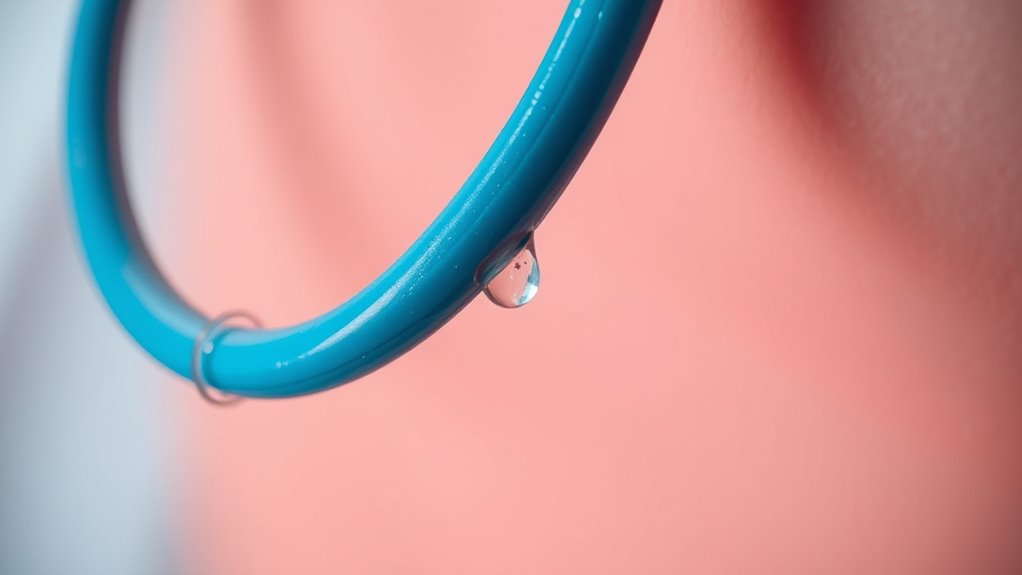Umbilical cord issues can impact your pregnancy in serious ways. Problems like cord compression and prolapse can lead to risks such as birth asphyxia and stillbirths. Symptoms to watch for include irregular fetal heartbeats and decreased movement. Regular monitoring during your pregnancy is crucial for early detection of potential complications. Being aware of these issues empowers you to seek timely medical interventions. Discover more about how to safeguard your pregnancy and understand the significance of umbilical cord health.
Key Takeaways
- Umbilical cord abnormalities contribute to 19% of stillbirths; awareness is crucial for monitoring during pregnancy.
- Common issues include nuchal cords, true knots, and cord prolapse, all posing risks to fetal health.
- Irregular fetal heartbeats and decreased movement may indicate umbilical cord complications requiring immediate attention.
- Early detection through prenatal ultrasounds and regular check-ups can prevent severe birth injuries.
- Medical interventions, such as cesarean delivery, may be necessary to address serious cord-related problems.

When you’re expecting, understanding umbilical cord issues is crucial, as they can significantly impact your pregnancy and your baby’s health. Umbilical cord abnormalities account for 19% of stillbirths when examined with rigorous criteria, making awareness essential. Various types of abnormalities can occur, including cord entrapment, knots, torsions, strictures, cord prolapse, and compromised fetal microcirculation. While few specific maternal characteristics are linked to these problems, knowing the risks can help you stay vigilant.
During your pregnancy, it’s important to recognize that 28% of stillbirths occurring at or beyond 32 weeks are tied to umbilical cord issues. This statistic underscores the need for close monitoring. Diagnosing these problems can be challenging, so histopathologic confirmation is often necessary to ascertain the cause of any complications.
28% of stillbirths at or beyond 32 weeks are linked to umbilical cord issues, highlighting the need for vigilant monitoring.
One common issue is umbilical cord compression, which can lead to decreased blood flow and potential birth injuries. Nuchal cords, which occur in 15-35% of pregnancies, can pose significant risks during delivery, while true knots can obstruct blood flow and are associated with an 8-11% stillbirth rate.
You should also be aware of umbilical cord prolapse, a dangerous condition that can result in birth asphyxia. Vasa previa, a rarer condition, puts fetal vessels at risk of rupture, adding to the complexity of cord-related issues. Signs to watch for include irregular fetal heartbeats, decreased fetal movement, and variable decelerations. These symptoms indicate potential problems and require immediate attention. Regular monitoring is vital for early detection of any abnormalities.
Umbilical cord complications can lead to severe birth injuries, such as birth asphyxia, hypoxic-ischemic encephalopathy (HIE), cerebral palsy, and fetal acidosis. The risk of placental abruption also increases with short umbilical cords. To mitigate these risks, early detection is critical. Prenatal ultrasounds can help identify issues like short cords or vasa previa, and fetal monitoring is essential for spotting irregular heartbeats or decreased movement.
In cases of cord prolapse or severe nuchal cords, cesarean delivery may become necessary. Prompt medical intervention can prevent serious birth injuries, ensuring your baby’s health. Ultimately, understanding umbilical cord issues empowers you to take proactive steps during your pregnancy, helping safeguard both you and your baby’s well-being.
Frequently Asked Questions
Can Umbilical Cord Issues Affect Future Pregnancies?
Yes, umbilical cord issues can affect future pregnancies, but not always.
While there’s no clear evidence that having complications in one pregnancy increases the risk in later ones, close monitoring is recommended if you’ve experienced umbilical cord problems before.
Genetic factors may play a role in some conditions, but they don’t necessarily indicate future risks.
Enhanced prenatal care helps manage any potential complications for your peace of mind during subsequent pregnancies.
What Are the Signs of Umbilical Cord Complications?
You might think that everything’s fine during pregnancy, but it’s crucial to watch for signs of umbilical cord complications.
Look out for abnormal fetal heart rates, meconium-stained amniotic fluid, and decreased fetal movements.
Vaginal bleeding and consistent abdominal pain can also signal trouble.
If you notice any of these symptoms, it’s vital to consult your healthcare provider immediately to ensure both you and your baby stay safe throughout the pregnancy.
How Are Umbilical Cord Issues Diagnosed Before Birth?
To diagnose umbilical cord issues before birth, healthcare providers often use advanced ultrasound techniques.
You might undergo transvaginal and transabdominal ultrasounds for a comprehensive assessment.
3D imaging and color Doppler can visualize blood flow and identify potential problems like nuchal cords or single umbilical arteries.
Regular prenatal check-ups are important, as they allow early detection and timely intervention, significantly improving outcomes for both you and your baby.
Is Genetic Testing Necessary for Umbilical Cord Problems?
Genetic testing isn’t typically necessary for umbilical cord problems unless there are other fetal anomalies present.
If you’re facing isolated umbilical cord issues, doctors usually rely on ultrasound for assessment rather than routine genetic testing.
However, if additional complications arise, they might recommend further testing to ensure everything’s okay.
Staying informed and discussing your concerns with your healthcare provider will help you understand the best approach for your situation.
What Lifestyle Changes Can Prevent Umbilical Cord Issues?
Think of your baby’s umbilical cord like a delicate flower that needs gentle care to bloom beautifully.
To prevent issues, you can keep the cord stump dry, give sponge baths, and let it breathe.
Use loose clothing and change diapers often to avoid irritation.
Monitor for infection signs, and if you notice anything odd, reach out to your healthcare provider.
These small lifestyle changes can help ensure a healthy start for your little one.
Conclusion
In summary, understanding umbilical cord issues is crucial for ensuring a healthy pregnancy. Did you know that about 1 in 10 pregnancies experience some form of umbilical cord complication? This statistic highlights how common these issues can be, and being informed helps you prepare for any challenges. By knowing the signs and potential risks, you can work closely with your healthcare provider to ensure the best outcomes for you and your baby. Stay proactive and informed!









